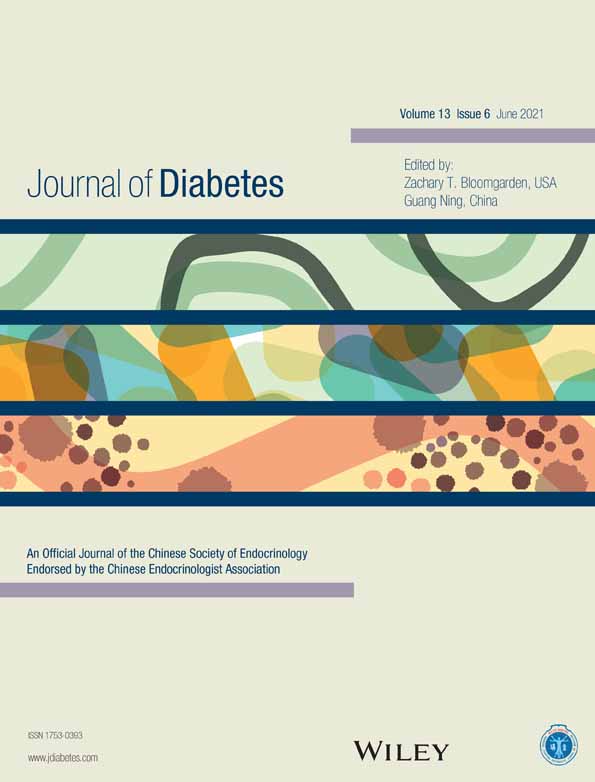The burden of ischemic heart disease and type 2 diabetes mellitus attributable to diet high in sugar-sweetened beverages in China: An analysis for the Global Burden of Disease Study 2017
中国归因于高糖饮料的缺血性心脏病和2型糖尿病的疾病负担:一项基于2017年全球疾病负担研究的分析
Funding information: Chinese Center for Disease Control and Prevention
Abstract
enBackground
The aim of this study was to estimate the burden of ischemic heart disease (IHD) and type 2 diabetes mellitus (T2DM) attributable to a diet high in sugar-sweetened beverages (SSBs) in China from 1990 to 2017.
Methods
Data from the Global Burden of Disease Study 2017 were used to assess all-age and age-standardized, risk-attributable mortality, years of life lost (YLL), years of life with disability (YLD), and disability-adjusted life years (DALYs) by age, sex, year, province, and sociodemographic index (SDI).
Results
For total noncommunicable diseases (NCDs), 12 523 (95% uncertainty interval 776-27 631) deaths, 305 288 (18 611-661 847) YLL, 142 051 (64 530-257 468) YLD, and 447 339 (132 677-858 838) DALYs were attributable to diet high in SSBs in 2017, particularly among males. Age-standardized, risk-attributable mortality, YLL, YLD, and DALY rates increased distinctly by 507.3%, 410.3%, 571.0%, and 453.3% from 1990 to 2017 respectively. Age-sex–specific, risk-attributable mortality and YLL rates for IHD in older adults (over 65 years) were higher than in young (between 25 and 39 years) and middle-aged adults (between 40 and 64 years) in 2017; however, the YLD and DALY rates for T2DM were higher in young and middle-aged males than in older males. The age-standardized, risk-attributable DALY rates for total NCDs increased substantially in high-SDI and high-middle–SDI provinces during the period.
Conclusions
China has a huge and growing burden of IHD and T2DM attributable to diet high in SSBs, particularly among young and middle-aged male adults in wealthier provinces. Evidence-based public health policies at the provincial levels to reduce the consumption of SSBs should be prioritized in China.
摘要
zh目的
估计中国1990年至2017年高糖饮料所导致的缺血性心脏病和2型糖尿病的疾病负担。
方法
使用2017年全球疾病负担研究的数据; 按年龄、性别、年份、省份和社会人口指数评估归因于高糖饮料的缺血性心脏病和2型糖尿病的死亡率、早死所致寿命损失(YLL)、伤残所致寿命损失(YLD)和伤残调整寿命年(DALY)数及标化率。
结果
2017年归因于高糖饮料的慢性病总死亡人数12523人(776-27631); 早死所致寿命损失为305288人年(18611-661847); 伤残所致寿命损失为142051人年(64530-257468); 伤残调整寿命年为447339人年(132677-858838); 以男性为主。1990年至2017年; 年龄标化的死亡率、YLL、 YLD 和DALY率分别增加了507.3%、410.3%、571.0%和453.3%。2017年; 老年人群(65岁以上)缺血性心脏病的死亡率和YLL率高于年轻人(25-39岁)和中年人(40-64岁); 然而; 对2型糖尿病来说; 青年和中年男性的YLD率和DALY率高于老年男性。1990-2017年; 在高SDI和高-中SDI的省份; 慢性病的标化DALY率大大增加。
结论
中国归因于高糖饮料的缺血性心脏病和2型糖尿病的疾病负担呈现增长趋势; 特别是在较富裕省份的年轻和中年男性人群中。基于这些证据; 应优先考虑减少高糖饮料消费的公共卫生决策。




